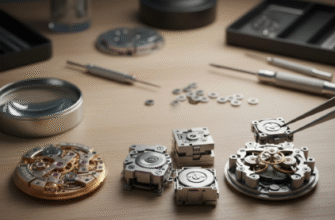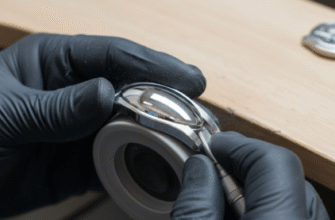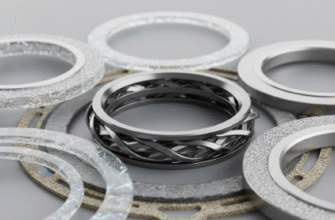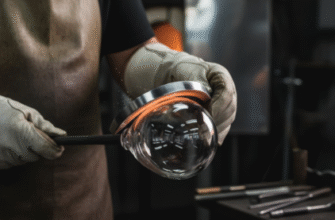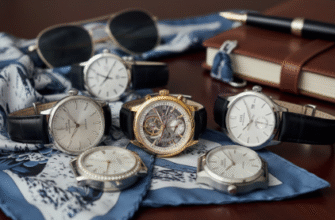The world of horology is one of miniature engineering, a realm where gears the size of a pinhead and springs as fine as a human hair work in concert to measure the passage of time. To the uninitiated, a mechanical watch movement is a bewildering maze of polished metal and shimmering jewels. For the watchmaker, it is a familiar landscape, but one that can only be navigated with a very specific set of keys. The assembly, repair, and adjustment of these intricate mechanisms are utterly dependent on an arsenal of specialized tools, each designed with a singular purpose and an uncompromising demand for precision. Without them, the most skilled hands are rendered useless, and the delicate dance of the escapement would grind to a permanent halt.
These are not the tools you find in a common hardware store. They are extensions of the watchmaker’s own senses, designed to manipulate components so small they are easily lost or damaged. The relationship between the artisan and their tools is symbiotic; the quality of the work is a direct reflection of the quality of the instruments used. From a simple screwdriver to a complex timing machine, each item plays a critical role in the life, death, and resurrection of a complicated watch movement.
Deconstruction and Reconstruction: The Foundation Tools
The first step in any service is disassembly, a careful process of deconstruction that requires finesse and the right equipment. The most fundamental tool is the watchmaker’s screwdriver. Unlike their larger cousins, these are precision instruments with finely ground, perfectly flat blades designed to fit screw slots exactly. This perfect fit is non-negotiable; a poorly fitting screwdriver will slip, marring the screw head and potentially damaging the surrounding plates or bridges. Sets of these screwdrivers come in graduated sizes, often measured in tenths of a millimeter, ensuring a perfect match for every screw in the movement.
Working alongside the screwdriver is the tweezer. Watchmakers use several types, but the most common are made from non-magnetic stainless steel or brass to prevent magnetizing the delicate steel parts of the movement, such as the hairspring. The tips are incredibly fine and precisely aligned, allowing for the gentle yet firm grip required to pick up and place everything from a tiny jewel to the balance wheel assembly. Using clumsy or magnetized tweezers is a cardinal sin in watchmaking, as it can introduce a host of problems that are difficult to diagnose and correct.
Many high-end watchmaking tools, particularly tweezers and screwdrivers, are crafted from special alloys like beryllium copper or anti-magnetic stainless steel. This is not merely for durability but is a critical feature to prevent the accidental magnetization of the watch’s hairspring. A magnetized hairspring will cause the watch to run erratically and extremely fast, one of the most common issues a watchmaker addresses.
To hold the movement securely while it’s being worked on, a movement holder is essential. This is typically an adjustable vise-like tool, often made of brass or a synthetic polymer to avoid scratching the movement plates. It grips the movement by its edges, allowing the watchmaker to apply the necessary force to loosen screws or fit parts without the movement shifting. Attempting to work on a movement resting on a simple bench mat is a recipe for disaster, as parts can be easily lost or damaged.
The Art of Repair: Specialized Intervention
Once a movement is disassembled and cleaned, the repair and adjustment phase begins. This is where the truly specialized and often more complex tools come into play. If a staff on a gear or the balance wheel is broken, a staking set is required. This is a robust tool consisting of a weighted base, an anvil with a variety of holes, and a set of precisely shaped punches or “stakes.” It allows the watchmaker to apply controlled force to drive out an old, broken staff and press-fit a new one with microscopic accuracy. It’s a powerful tool that demands a delicate touch.
Timing is Everything
After reassembly, the watch must be adjusted to keep accurate time. This is impossible to do by ear or guesswork alone. The single most important piece of diagnostic equipment in a modern workshop is the timing machine, or Timegrapher. This device has a sensitive microphone that “listens” to the ticking of the watch escapement. It then translates these sounds into a visual display, providing critical data in seconds.
The timing machine measures several key metrics:
- Rate: How fast or slow the watch is running, measured in seconds per day.
- Amplitude: The amount of rotation of the balance wheel in each direction. Low amplitude can indicate a problem with the power train or lubrication.
- Beat Error: A measure of the symmetry of the balance wheel’s swing. A high beat error means the impulse is uneven, leading to poor timekeeping.
By analyzing the patterns on the screen, a watchmaker can quickly diagnose issues that would otherwise take hours of painstaking observation to identify. Adjustments are then made to the regulator pins or the position of the hairspring stud to bring these metrics within acceptable tolerances.
Never attempt to open a watch case or manipulate a movement without the proper tools. Using household items like knives for case backs or generic screwdrivers will almost certainly result in scratching, damage to screws, and potentially irreversible harm to the delicate internal mechanism. The cost of professional repair far outweighs the savings of a DIY attempt gone wrong.
For vintage or high-end watches, achieving perfect balance is key. A poising tool is used to check the static balance of the balance wheel assembly. The wheel is placed on two extremely sharp, level ruby or carbide jaws. If the wheel is out of poise, the heaviest point will consistently settle downwards. The watchmaker must then carefully remove an infinitesimal amount of material from the heavy spot on the underside of the balance rim until it rests in any position without rolling. It’s a task that requires immense patience and a steady hand, as the adjustments are invisible to the naked eye.
The list of specialized tools goes on and on, from jewel presses for fitting synthetic rubies to mainspring winders that safely handle the powerful energy stored in the barrel. Each tool represents a solution to a specific problem encountered over centuries of horological development. They are the legacy of countless artisans who refined their methods and created the instruments needed to push the boundaries of mechanical timekeeping. The modern watchmaker stands on the shoulders of these giants, and their tools are the conduit through which that historical knowledge is applied.

